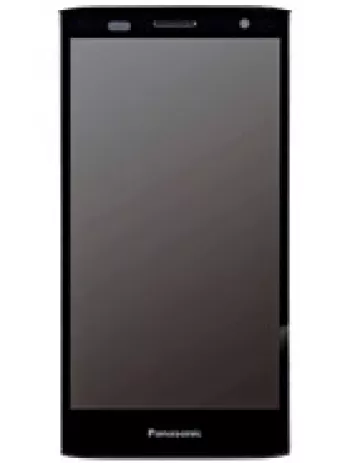
General Overview of Panasonic G50
The Panasonic G50 was released in the third quarter of 2003 and quickly gained attention for its compact size and lightweight design. Despite its small stature, the phone offered durability and practicality for users looking for a basic mobile device for making calls and sending messages. Given its release in the early 2000s, the phone includes features typical of that period, emphasizing simple communication over multimedia functionality.
Design and Build
The Panasonic G50 is incredibly compact with dimensions measuring just 80 x 43 x 18 mm and a weight of only 74 grams. Its small size makes it one of the more portable phones of its time, comfortably fitting in any pocket or purse. The design is straightforward, focusing on functionality over flair. The phone was available in three colors: silver, red, and blue, appealing to a range of tastes from conservative to bold.
Display Features
Equipped with a CSTN display technology capable of showing 4096 colors, the Panasonic G50's screen offers a basic visual experience that fits its functional focus. The screen has a resolution of 128 x 96 pixels with a 4:3 aspect ratio, which, while quite limited by today’s standards, was reasonably acceptable for its time. Although the screen may not provide the vivid colors and detailed graphics we expect from modern smartphones, it was sufficient for simple tasks such as selecting contacts and reading text messages.
Network and Connectivity
The Panasonic G50 supports GSM technology, which was the standard for mobile networks at the time, and operates on the 900, 1800, and 1900 MHz frequency bands. It provides GPRS class 8, enabling basic data transfer speeds for email and WAP browsing. However, it lacks modern connectivity options such as Bluetooth, WLAN, or EDGE. The absence of 3G or more recent standards isn't surprising considering the phone's age and target market as a budget-friendly mobile device.
Memory Specs
Memory and storage capabilities on the Panasonic G50 are quite limited. The phone does not support expandable memory through card slots, and contact storage is limited to 250 entries, with each contact capable of holding up to three numbers. Call records are also minimal, keeping track of the last 20 dialed, 10 received, and 10 missed calls. While these specifications may seem restrictive today, they were quite typical for feature phones of that era.
Battery Performance
The phone is powered by a removable Li-Ion 780 mAh battery. This modest capacity is balanced by the phone's limited features, allowing for relatively long battery life. Users could expect up to 200 hours of standby time and up to six hours of talk time. The focus on efficient battery use over fancy features aligned with consumer needs for a dependable device capable of maintaining long periods of basic operation.
Sound and Alerts
Despite its basic nature, the Panasonic G50 provides a loudspeaker and supports vibration alerts. The phone allows for downloadable polyphonic ringtones, which was a popular feature back then, offering a degree of customization over the default tonal alerts. With no 3.5mm headphone jack, sound options are limited, but this limitation is consistent with the device's overall simplicity.
Communications and Tools
For messaging, the Panasonic G50 supports SMS and the lesser-known EMS format, providing users with basic text communication options. It also includes a WAP 2.0/xHTML browser to access internet content at a fundamental level. Standard features like a clock and alarm are integrated, along with a suite of simple games for entertainment. Lack of Java support means no ability to download more complex applications or games, but this was again typical for phones of the era.
Conclusion
In sum, the Panasonic G50 was a product of its time, offering simple features aimed at maximizing communication and usability while minimizing size and weight. It was not designed to compete with more sophisticated devices but to serve as a reliable communication tool for users who valued functionality over flashiness. For those interested in technology's evolution, the Panasonic G50 represents a clear delineation of mobile expectations in the early 2000s compared to today’s feature-rich smartphones.
Main Features of Panasonic G50
- Compact and lightweight design: Weighs only 74 g and measures 80 x 43 x 18 mm.
- Colorful display: Features a CSTN screen with 4096 colors and a resolution of 128 x 96 pixels.
- Effective GSM connectivity: Supports GSM 900 / 1800 / 1900 networks for reliable communication.
- Convenient call management: Stores up to 250 phonebook entries with 3 numbers each, and maintains records of 20 dialed, 10 received, and 10 missed calls.
- Long battery life: Offers up to 200 hours of standby time and up to 6 hours of talk time with a removable Li-Ion 780 mAh battery.
- Customizable alerts: Provides vibration alerts and downloadable polyphonic ringtones.
- Basic multimedia features: Includes SMS and EMS messaging, WAP 2.0/xHTML browser, and several preloaded games.
- Available in three colors: Silver, Red, and Blue.
Drawbacks of Panasonic G50
- Outdated network technology: Limited to GSM with no EDGE support.
- Discontinued status: This device is no longer being produced or supported.
- Display limitations: CSTN screen with only 4096 colors and low resolution (128 x 96 pixels).
- No expandable storage: Absence of a card slot for additional memory.
- Limited phonebook: Can store only 250 contacts, each with up to 3 numbers.
- No camera: Lacks any form of camera functionality.
- No 3.5mm headphone jack, limiting audio accessory compatibility.
- Absence of modern connectivity options: No WLAN, Bluetooth, or GPS.
- No radio functionality, limiting entertainment options.
- No USB support for connecting to other devices or charging.
- Basic messaging capabilities: Supports only SMS and EMS.
- No Java support, limiting app and game availability.

View Also
More Phones
All Rights Reserved +14266 Phones © Mobilawy 2025

























